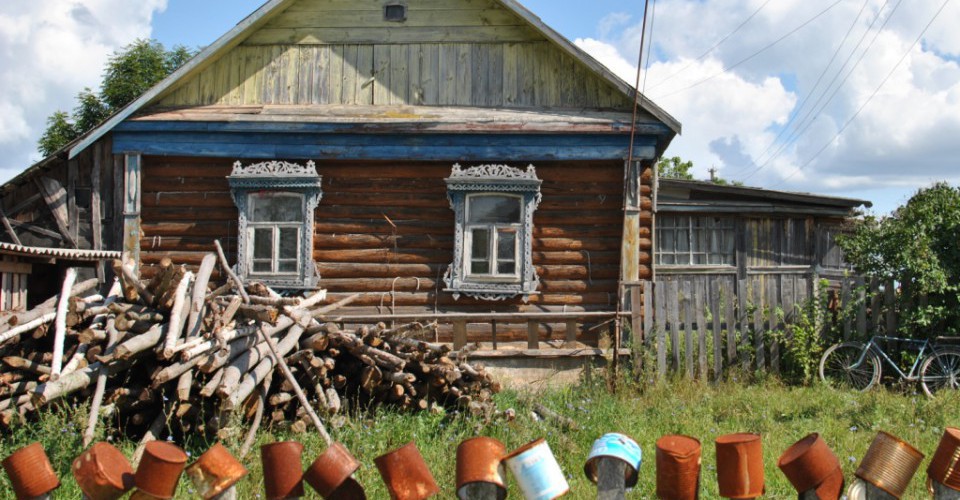
Milton: “…I used to be over by the window, and I could see the squirrels, and they were married, but then, they switched from the Swingline to the Boston stapler, but I kept my Swingline stapler because it didn’t bind up as much, and I kept the staples for the Swingline stapler and it’s not okay because if they take my stapler then I’ll set the building on fire… “
This is my third and final post about the papers presented as part of a panel on Class formation in Russia at the BASEES Uppsala conference, Regimes and Societies in Conflict: Eastern Europe and Russia since 1956.
The third paper in this troika is by Mikhail Chernysh on ‘The structure of the Russian middle class’. Chernysh begins by examining the Russian government’s development programme “On the concept of the social and economic development 2008-2020” which aims to increase “the intensity of growth of the human capital and the middle class”. The policy paper is useful to get an idea of the government’s way of defining a middle class. These are individuals with incomes over six times the minimum. On this measure the ‘middle’ rises from 30% in 2010 to 52-55% by 2020. Chernysh remarks that it is symptomatic that the self-employed or small and medium entrepreneurs don’t really figure in this equation. The middle class is defined mainly by improved consumption linked to income.
It is striking here how modest this definition is in money terms. If ‘minimum income’ here refers to the МРОТ, then a ‘middle-class’ income equates to around 60,000 Rubles per month or 750 Euros a month. Here’s a discussion of the ‘minimum’: https://www.gazeta-unp.ru/articles/51943-mrot-v-rossii-s-1-yanvarya-2018-goda-qqq-17-m08. Going back to Markku Kivinen’s paper on linking middle-class to the classical idea of a propertied bourgeoisie, it is interesting that this amount is not enough to build assets over any meaningful period in most circumstances in Russia. People (including dual-income couples with no, or one, child) on this income typically resort to micro and meso short-term loans and mortgages. There are many stories of bad debt, ruined relationships and moonlighting among this segment of the so-called ‘middle-class’. In this income bracket I see people give up or downgrade their automobiles (to Russian or second-hand models bought for cash), whereas in the ‘noughties’ they bought new on credit. Similarly, while people nudging 1000 Euros, or so, could previously holiday now and then in Europe, now they are turning to domestic destinations, or those in the CIS (witness the boom in Armenia/Georgia tourism).
Chernysh then reports on an interesting discourse analysis by E. Balobanova which examines how Russian presidents have used the phrase ‘middle-class’. [E. Balobanova 2011. Analiz ponyaita “srednii klass” v poslaniakh presidenta Federalnomu sobraniu RF. Political Linguistics. 2(36). For Yeltsin this phrase meant primarily ‘the bureaucracy’, echoing discussion in other papers about the ‘state’-focus of class and caste. Under Putin and Medvedev there was rather inconsistent rhetoric about raising what we might call the neglected technical intelligentsia up to the middle class. It’s interesting that again, entrepreneurs are nowhere in sight and neither are the ‘core’ intelligentsia of teachers and lecturers.

Chernysh then traces the controversial debates in sociology about the middle-class – from being seen as a myth, to the current (politicized?) promotion of Russia-specific ways of counting a middle-class that would produce figures higher than 10% or 20% (see my previous post). Chernysh remarks that this led to the rather unconvincing result of an income of 220 Euros-equivalent allowing entry to the middle class – 44% of the population!
Chernysh then goes on to discuss what he sees as the neoliberal compact in Russian society – particularly with regard to its effect on the state-sector middle class. In return for large increases in salaries, doctors, teachers and others had to sacrifice job security (austerity cut backs) and autonomy (increased monitoring, loss of control over job processes). This strongly parallels my findings among working-class cohorts in the same period. Also important for Chernysh is the actual intensification of work for these groups. The positive part of the deal – increased pay – is at least partly illusory. This is because of intensification but also because much of the pay increase is based on discretionary awards – premiia/nadbavka, etc. This also finds strong echoes in my work with caregivers like teachers and kindergarten employees. They complained after 2009 that they weren’t really better off as so much of their pay was subject to these ‘tricks’ (see p. 62, 64). Chernysh speculates that these factors may influence the current negative evaluation of the government by these groups.
Based on a number of datasets, particularly focusing on responses to questions about what people struggle to afford (durables, more expensive purchases like cars, etc), Chernysh finds that coupled with an occupation approach, the Russian middle-class is less than 20% of the population and more likely less than 15%.
Following Erik Olin Wright’s definition of the middle class as those working in jobs where autonomy is possible, Chernysh analyses autonomy as a variable in a group of respondents with middle class consumption patterns and a university degree. He finds a significant fall since the 1990s in this category. This is important in the historical context of the necessity, even under totalitarianism, of a ‘moderate level of work autonomy’ in Soviet professions. (I argue, along with the sociologist A. Temnitskii, that this was true of blue-collar workers as well).
Chernysh concludes by drawing parallels with H. Balzer’s Russia’s missing middle class : ‘Middle class consciousness is contradictory, it is not only critical, but also individualistic, showing limited capability of concerted action in defense of group’s rights and class positions. It looks like a revival of historical pattern dating back to the pre-revolutionary times. Balzer’s analysis of the tsarist Russia middle class showed that it was too small and disorganized to effect tangible influence and possibly revert the negative tendencies that weaken existing economic and social institutions’.
Returning to the panel as a whole, the organizer, Jouko Nikula, recently published an interpretive summary based on a broad survey dataset ‘Social Distinctions in Modern Russia’ (SDMR), which some of the papers also made use of.
Nikula points out the ‘decreased opportunities employees have to influence their working pace or work tasks’, particularly among professionals and in the public sector, with a narrowing too of flexibility on working hours. Unemployment has been low despite the two recessions endured by the country – one in 2009, the second in 2014. This because of a persistence of the Soviet practice of labour hoardings and paternalism, at the cost of low wages and furlough, as well as the foregoing of bonuses, which as we discussed earlier, make up an increasing proportion of the real take-home wage.
All in all then, a provocative set of papers from the Uppsala conference. To conclude I would ground them in the reality of my ethnographic fieldwork (albeit partial and unrepresentative). I note the following from my own fieldwork: the least satisfied people from my research were always those that experienced the least autonomy (or a perceptible fall in it over time) – but this was true both of working-class (forklift drivers, packers and sorters in the carplant), and middle-class jobs (teachers and child-psychologists, whose work became increasingly monitored by metric evaluations over the 2010s). Who was most ‘satisfied’? Those with the most or least – well-paid entrepreneurs in high-barrier-to-entry areas like data-gathering and bespoke services, and at the other end, those informal taxi-drivers and grifters who answered to no one and could always ‘withdraw’ to the burrow of the garden plot (at least in the summer) and other strategies of informality.

